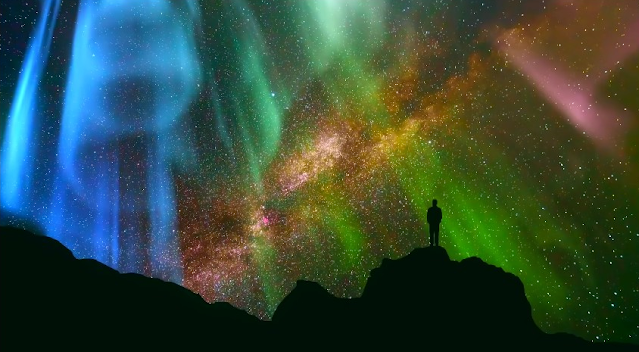The concept that CO2 and climate change are political fabrications is often propagated by those who believe powerful entities are behind the so-called global warming hoax, aiming to convince the public that human activities are to blame. However, it is argued that climate change is a natural process, similar to events that have occurred throughout history. The video below by Suspicious0bservers provides a detailed analysis of the actual causes of current planetary changes and offers insights into what we might expect in the coming years.
An extinction threat to many species "The coming magnetic pole shift"
The most recent complete magnetic pole reversal, known as the Brunhes-Matuyama reversal, occurred approximately 780,000 years ago. During this event, Earth’s magnetic poles switched places. These reversals are part of Earth’s natural geomagnetic processes and occur irregularly over geological timescales.
However, there have been shorter, less complete shifts called geomagnetic excursions. One of the notable recent geomagnetic excursions is the Laschamp event, which occurred about 41,000 years ago. During this event, the magnetic field weakened significantly, and the poles nearly reversed before returning to their original configuration.
Now, Earth is currently undergoing a cyclical magnetic pole shift, known as a geomagnetic excursion. This movement has been accelerating in recent decades, particularly with the North Magnetic Pole rapid movement from the Canadian Arctic towards Russia, which poses a significant extinction threat to many species.
The weakening of Earth’s magnetic field and the shifting of its magnetic poles are well-documented phenomena.
In 2000, NASA and geophysicists reported a 10% decline in the magnetic field’s strength. By 2010, the European Space Agency’s Magnetic Mission updated this figure to a 15% loss, noting an acceleration from a 5% loss per century to 5% per decade. By 2020, another 5% decline was recorded, and the 2023 interpolated value showed further acceleration. The initial 10% reduction took 150 years, but the next 10% occurred within just 20 years. If this acceleration continues, we could lose 5% of the magnetic field every five years.
We anticipate a 50% reduction in the magnetic field by the early 2030s, a level that could make our technological lifestyle unsustainable and lead to severe weather impacts. Around 2040, a full magnetic pole flip or geomagnetic excursion is expected, although this could occur a few years earlier or later.
A critical concern in the coming years is the loss of ozone due to particle-driven molecular destruction, coupled with increased exposure to cosmic ray space radiation. This scenario would result in climate chaos and heightened radiation exposure. The only defense against these effects is Earth’s magnetic field, which is currently weakening due to the ongoing pole shift.
Recent studies consistently show that magnetic reversals and pole shifts are extreme environmental events that significantly impact the biosphere. The primary drivers of these impacts are increased radiation and ozone depletion. Numerous studies confirm that solar protons, electrons, and cosmic rays are penetrating the atmosphere more effectively due to the weakening magnetic field, reaching critical levels.
This increased radiation has two main effects: ozone destruction allows more ultraviolet (UV) light into Earth’s system, raising temperatures, and cosmic rays intensify extreme weather events, including heatwaves, cold snaps, storms, flooding, and droughts.
These changes not only affect the climate but also harm living organisms. Extra UV light is dangerous for animals, plants, and microorganisms, including oceanic plankton and chlorophyll-based food chains. Cosmic rays similarly amplify particle radiation’s detrimental effects, causing cancer, cellular dysfunction, and DNA mutations.
Scientists clearly recognize that cyclical magnetic pole shifts pose significant challenges to life on Earth. Humans will face these challenges both directly and through their impact on the food chain.
Moreover, our dependence on electricity makes us particularly vulnerable. A weakened magnetic field could allow solar activity to disrupt power grids, resulting in widespread loss of heat, water treatment, food transport, communication, and critical infrastructure.
This growing issue highlights the planet’s increasing vulnerability as it loses its protective magnetic shield.

